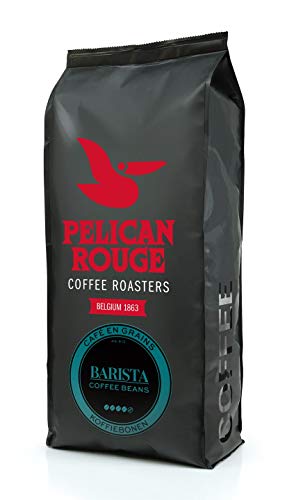Coffee Bean Types: Arabica, Robusta, Liberica, and Excelsa
You probably already know that different varieties produce distinct flavors. Learn about four of the most well-known varieties: Arabica. Robusta. Liberica. and Excelsa.
Excelsa beans are a type of Liberica that is cultivated exclusively in Southeast Asia. They have a more fruity and tarter taste profile, and are often added to blends of coffee to enhance the flavor.
Arabica
Arabica coffee beans make up 75% of global production. Arabica beans are milder and have a sweeter flavor than Robusta and come in a variety profiles. The aroma and taste of a cup of coffee can differ significantly based on the growing conditions and processing techniques used to produce it.
wholesale coffee beans uk " comes from the Arabic word for berry and coffee beans are actually fruit seeds that grow in bright red berries. It is believed that ancient Ethiopian shepherds noticed that their goats were stimulated by eating fruits. The cultivation of coffee quickly spread around the world.
Coffee beans can be grown at high altitudes and flourish in cold temperatures and lots of rain. This is why Arabica coffee is considered to be the most delicious kind of coffee.
Many specialty coffee shops and roasters are focused on ethically sourced arabica beans, with a focus on fair wages for farmers and sustainable farming practices. These companies typically blend arabica beans to create unique specialty coffees that are well-suited for a wide range of brewing methods. Blending can control the taste, aroma, body and acidity of coffee. It is usually used to create an even and balanced taste that appeals a wide market.
Robusta
Robusta beans (Coffea canephora) are the second most widely used type of coffee bean cultivated worldwide. They contain more caffeine per bean than Arabica and are more resistant to pests and disease. They also contain higher levels of chlorogenic acids, which are naturally occurring antioxidants. These acids can cause oxidation in the coffee's brewing process and cause undesirable flavors.
The plant itself is more durable than arabica and is able to thrive in less favorable climate conditions and at lower elevations. It can tolerate higher temperatures and does well in direct sun. It produces more coffee per plant and grows faster than arabica. This makes it a more efficient crop to grow.
While it may seem counterintuitive, Robusta and arabica beans are often blended to create coffee blends. If you've noticed the names of countries such as Uganda or Kenya listed on a bag of coffee, it's likely that there's a bit of robusta too.
Although some roasters only use arabica beans but the majority do mix both varieties to lower costs and ensure the quality. To ensure the integrity of the flavor, you should choose an excellent bean from a trusted source. This can be accomplished by purchasing your beans direct from a farmer.
Liberica
Liberica beans are more or less football shaped which distinguishes them from other types of coffee beans. They have a distinctive aroma that is floral and fruity with subtle smoky undertones. They are paired with other types of coffee beans to give them a richer, more robust taste.
Liberica coffee beans are grown in West Africa and Malaysia (Borneo) as and in Southeast Asia. They can thrive in low altitudes and withstand hot, humid climates. They are also more resistant to diseases than Arabica or Robusta.
These characteristics make them ideal for home cultivation. It is possible to purchase the seeds online from a number of sources, however it's preferred to purchase them locally-owned producers to ensure the quality of the beans. The ideal conditions for growing Liberica coffee plants are fertile, deep volcanic soils with moderately acidic pH, and adequate annual rainfall.
Another kind of coffee bean is Excelsa, which was once considered to be a separate species but was later re-classified to be a subspecies of Liberica. These coffee beans with an oval shape are grown on large coffee plants that range from 20 to 30 feet in height at medium altitudes. They have a distinct flavor that is both tart and fruity and has made them a popular choice in house blends. They are also less heavy on aroma and caffeine than Arabica and Robusta however they still possess a unique depth of flavor.
Excelsa
Excelsa coffee beans aren't as well-known as Arabica and Robusta although they're fourth popular. They were actually thought to be to be a different species of coffee until 2006 when they were reclassified to be a synonym for Coffea Liberica var. dewevrei. Currently, they're cultivated primarily in Southeast Asia and account for 7% of the world's production of coffee. The coffee beans are distinctive with a teardrop-shaped shape and possess a dark, mysterious taste. They are frequently utilized to give blends extra body and a rich, tart taste of ripened fruits.
Arabica beans are by far the most popular and are renowned for their sweeter flavor. They thrive at higher altitudes and enjoy warm, tropical climates. They also have a hint of acidity. When properly roasted and brewed they may be flavored with notes of nuts, chocolate, or even fruit.

Robusta is an extremely close second to Arabica and is responsible for about 40% of the world's coffee. These beans are rounder and smaller, yet contain twice as much caffeine as Arabica. They also have more bitterness than the other two varieties and are more likely to have earthy and woody overtones.
After having learned about the four most common types, it's now time to select your favorite brew. If you prefer a delicate and smooth flavor go for an arabica bean, or a blend consisting of arabica beans and robusta beans.
